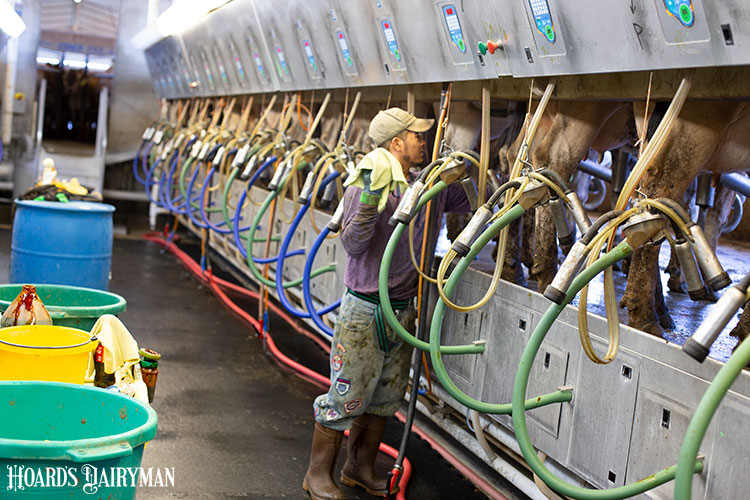
The cost of production differences has become a critical differentiator for the nation’s dairy farmers. In a report released last year by the U.S. Department of Agriculture’s Economic Research Service (ERS), titled “Consolidation in U.S. Dairy Farming,” one of the takeaways is there is excellent information regarding costs of production in the U.S. dairy industry. The report presents information that delves into the reasons why the dairy industry continues to see a larger proportion of U.S. milk production coming from larger farms. The information is insightful and worth the time to read. However, it’s the information published in Consolidation in U.S. Dairy Farming that traces back to the 2016 dairy specific Agricultural Resource Management Survey (ARMS) that is actually the most informative when it comes to how costs differ across producers of all sizes.
Table 7 compares milk yields and the adoption of technology by herd size. To no shock, larger farms have adopted technologies like computerized milk and feed delivery systems and three times a day milking to a much larger extent than smaller farms. However, the data from the ARMS survey shows that the highest annual milk yields occur in farms in the 500 to 999 herd size (23,702 pounds) and drops off somewhat in larger operations (22,910 pounds in operations with over 1,999 cows). This data appears to suggest that there are other factors that play in improving milk yields that become more challenging to manage in larger farms. To be clear, higher milk yields do not always suggest greater profitability.
Table 9 of the same report also provides a range of total costs of production by herd size and estimates of low-, average- and high-cost producers within each herd size. This table provides many insights that should help dairy producers as they make future decisions about their operation. For starters, low-cost producers in the 100 to 199 herd size range have total production costs ($19.76 per hundredweight [cwt.]) near high-cost producers in the 2,000 or greater herd size range ($19.63 per cwt.) This point should be a clear reminder that efficient smaller operations are competitive with larger operations.
Dairy producers should look at the range of cost shown in the table to see where they are at in terms of total production costs on their operation. Those operations that find themselves in the high-cost category can look at table 6 to see what cost categories they need to examine.
Table 9 provides more information with insights on the future of the dairy industry. Examination of the range of costs from low-cost to high-cost producers in the different herd sizes shows that the range is much larger for smaller operations than larger operations. The smaller range found in the larger operations could lead to larger fluctuations in milk prices as milk supply adjustment is more stubborn as the range of production costs narrow.
Knowing where your cost structure falls over the range of costs across the country is a clear indicator on longer term success.








